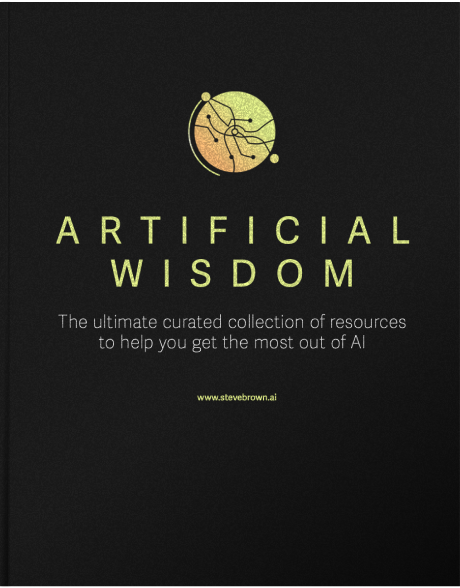Robots Are Getting Interesting Again
For a long time, robots were interesting, but boring. They made our cars, shook Petri dishes in science labs, and vacuumed our floors. The promise of robot butlers, companions, and factory workers stayed firmly in the realms of science fiction with lovable characters like C3PO, Rosey, and Robby.
Things have changed.
The progress in humanoid robotics has leapt forward significantly in just the last two years, and as robots have begun to merge with powerful AI based on large language models from companies like Open AI, their capabilities are impressive.
Figure 01 Leads the Pack
Consider the Figure 01 robot. It’s a humanoid robot that stands 5’6” tall, weighs 132lb (60kg), and can carry a payload of 32lb (20kg). It has a five-hour run time and is currently on trial at the BMW plant in South Carolina. With its shiny metallic finish, you may see echos of The Terminator, but thankfully this robot only walks at a max speed of 2.7 mph so you can easily outrun it.
Check out this demo that Figure released in March, showing Figure interacting with one of their researchers. Notice the impressive dexterity as it picks up an Apple and arranges cups and plates on a drying rack, and also the sophistication of the interactions it has. It understands that an Apple is food, where plates should go, and using Open AI’s GPT-4 multimodal model it can understand the visual scene in front of it.
Another capability that separates Figure 01 from the pack is its ability to learn by observation. Rather than needing specific training on the motions it needs to go through to use a coffee machine, Figure was able to observe a human making coffee and then work out how to perform the task itself. The process took 10 hours, but that’s still an impressive achievement. You can see Figure in action making coffee with a Keurig in the video here.
Figure is founded by Brett Adcock, a serial entrepreneur who previously founded eVTOL leader, Archer Aviation, and hiring platform, Vettery. Figure is already valued at $2.6 billion and Adcock has assembled talent from Google DeepMind, Apple, Boston Dynamics, and Tesla. This guy knows what he’s doing. In under two years, Figure has built an industry-leading product and has huge ambitions. Adcock recently commented, “I think the world will eventually need about 10 billion humanoid robots from all the various manufacturers.”
Many More Exciting Robotics Startups
And there are plenty of other manufacturers trying to build the robots society will need in the future. Because need them, we will (now I’m starting to sound like Yoda). With aging populations a huge issue for many countries around the world—notably the USA, Western Europe, China, Japan, and Korea—worker shortages are going to be a fact of life for most advanced economies.
“I think the world will eventually need about 10 billion humanoid robots from all the various manufacturers.”
— Brett Adcock, CEO and founder, Figure
Other companies working to develop robots include:
- Agility Robotics - A robotics startup that spun out of Oregon State University. Their “Digit” robot is on trial in Amazon warehouses (video). They also have a partnership with supply chain software giant, Manhattan Associates.
- Boston Dynamics - Their two flagship robots are Spot (a dog-like robot often used for facilities inspections and patrols by companies including National Grid) and Atlas, a humanoid robot recently reborn as an all-electric model (more details below).
- Sanctuary - This Canadian company has built a humanoid robot, Phoenix, with impressive dexterity. Demo videos show Phoenix closing a ziploc bag, soldering wires, and picking blueberries. Phoenix is currently on trial at the Canadian Tire company. At the moment it lacks legs, though they are planned.
- Tesla - Their Optimus robot started out as just a person in a suit at a stupid ‘launch’ event, but has evolved into a capable humanoid robot. Their ultimate goal is to make a household robot they can sell for under $20,000. Their current prototype, Optimus-2, can lift 150lbs (68kg), move at 7mph, and was demonstrated gently folding a t-shirt.
- Fourier Intelligence - Based in Singapore, this company is building a humanoid robot named “GR 1”.
- Apptronik - Moving now into the “also ran” category, this small startup is building a humanoid robot named, Apollo. Apollo is 5’8”, weighs 160lb (72kg), has a 4-hour battery life, can carry a 55lb (25kg) weight, and is designed for warehousing applications.
- LimX Dynamics - Chinese company, LimX, is building a humanoid robot named CL-1. They also have a biped called P1 that looks like a Star Wars character, and a wheeled quadruped robot. Their offering trails the leaders today, but with R&D talent from major global universities they have a good chance to catch up.
Why have are these big advances suddenly happening now? The building blocks needed to build an impressive robot are finally coming together: lightweight electric motors, cheap high energy batteries, advanced sensors, robotic control AI, machine vision, and multimodal large language models.
Yesterday, Boston Dynamics retired their aging Atlas robot. With looks like a nightclub bouncer and a body powered by hydraulics, Atlas had impressive gymnastic abilities but was not very robust. Atlas’s farewell video below shows both its successes and failures, which often result in a busted hydraulic line and a death spray of hydraulic fluid as it goes down.
The next generation of Atlas was announced today. No more hydraulics. This baby is fully electric and has the flexibility of a contortionist. Its unnatural body twists are unsettling, but being able to turn around easily on a manufacturing floor is a valuable ability. Figure 01 certainly can’t do that. This sneak preview doesn’t reveal much yet. It remains to be seen how the new Atlas will stack up against Figure’s dexterity, visual understanding, learning, and interactive abilities.
What It Means for the Future
Robots will certainly change the way we work, will alleviate worker shortages, and may ultimately make sure I have a cold martini waiting for me when I get home from work, but for now there’s still more R&D and testing to be done.
One other reason we may need robots is that many researchers believe the only way to build artificial general intelligence (AGI) is through embodiment…giving an AI the ability to explore and understand the world with a physical body. But that’s a topic for a future post…

The unlimited curated collection of resources to help you get the most out of AI
#1 AI Futurist
Keynote Speaker.
Boost productivity, streamline operations, and enhance customer experience with AI. Get expert guidance directly from Steve Brown.
.avif)












































































.jpg)